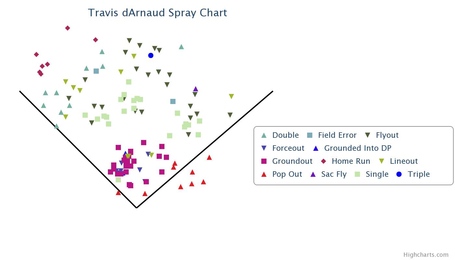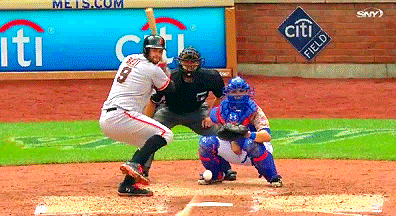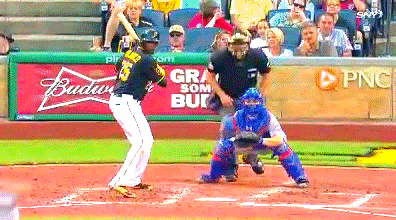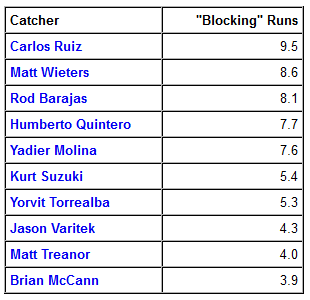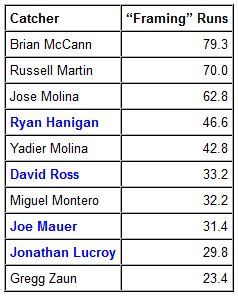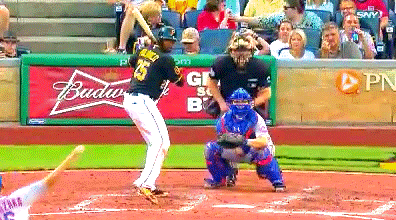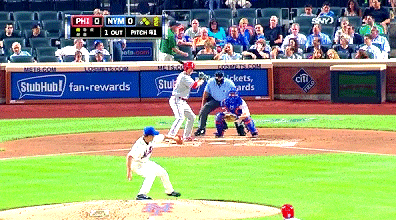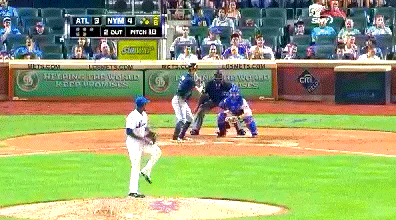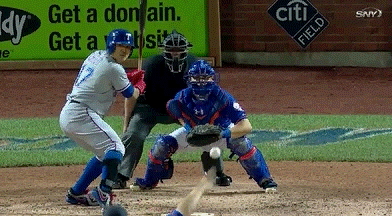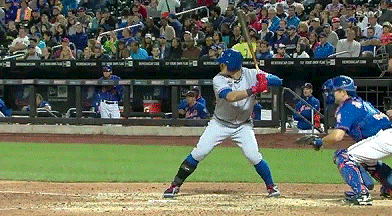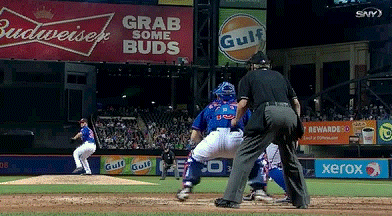
When Yoan Moncada becomes eligible, should signing the Cuban middle infielder be a priority for the Mets?
It's not supposed to be that easy. Rey Ordonez became estranged from his wife when he defected to the United States because of time, distance, and the extremely difficult logistics of coordinating temporary or permanent reunions. As a result, he played nearly no role whatsoever in his young son's life. Jorge Toca's marriage fell into disarray for similar reasons. Jose Contreras was separated from his mother for some eight years, though his story had a somewhat happy ending.
Yasiel Puig and Aroldis Chapman are both currently facing litigation concerning their supposed "snitching" to Cuban authorities regarding co-conspirators in failed plots to smuggle themselves off of the island. Misael Siverio had to sneak away from a coach who had seemed to always support him without ever saying "thank you" or "goodbye," and then had to deal with the subsequent betrayal of their friendship.
Yoan Moncada Olivera (sometimes "Johan") simply asked for his release from the Cienfuegos team, was granted a visa and passport by the government, and left the island nation on a plane headed for either the Dominican Republic or Mexico. This isn't an isolated case. Of late, the Cuban government has been allowing players to leave the country hassle-free, provided they petition and make their case to the Cuban National Baseball Commission. In addition to Moncada, the Cuban government has allowed Yenier Bello, Irait Chirino, and Pável Quesada to leave the country. Coupled with looser restrictions concerning players playing in leagues abroad, the moves are seen as an attempt to establish goodwill so that players can benefit financially and the government can gain more money and prestige.
Moncada was born on May 27, 1995, in the central municipality of Abreus in the Cienfuegos province. Like many other Cuban boys, Moncada was raised on tales of great Cuban and American baseball players and aspired to be one growing up; but, unlike so many others, it quickly became apparent that he had hit the genetic jackpot and might just accomplish that dream. The boy sprouted into a roughly six-foot, 200-pound man, able to hit from both sides of the plate and proficient at playing both shortstop and second base. His performance in the National Championship opened eyes domestically, as he notched forty hits—including eight homers—in twenty-four games. His performance in the 14th IBAF U-16 World Baseball Championship opened eyes internationally, as he hit .500/.500/.800 in twenty at-bats, with two doubles and two triples.
Naturally, Cienfuegos manager Narciso Ferrer wanted the switch-hitting middle infielder for his team. Playing mostly third and second base, the 17-year-old had a phenomenal season. In his rookie year, Moncada hit .279/.416/.343. He hit an impressive .304/.396/.380 during the Primero Fase (first phase) and .254/.436/.305 during the Segundo Fase (second phase). While he struggled a bit in the second phase, it is important to note that his line was still above average offensively, thanks to his 16% walk rate. GW of obstructedview.net calculated the rookie's OPS+ in the second phase to be 103, slightly better than league average.
Moncada did not suffer a sophomore slump, as some players do. For the year—no longer split into Primero Fase and Segundo Fase—he hit .273/.365/.406. While his on-base percentage took a hit, he bolstered his slugging percentage with four more doubles than he had in the 2012-2013 season, two more doubles than in 2012-2013, and two more home runs. His ISO jumped from .064 to .133. Once again, he was an above-average offensive player, with a 118 OPS+.
| Year | Age | G | AB | AVG | OBP | SLG | HR | BB | K | SB |
|---|---|---|---|---|---|---|---|---|---|---|
| 2012-2013 (52nd SNdB) | 17 | 56 | 138 | .279 | .416 | .343 | 1 | 20 | 35 | 13/18 |
| 2013-2014 (53rd SNdB) | 18 | 45 | 165 | .273 | .365 | .406 | 3 | 20 | 34 | 8/14 |
The youngster seems to know what he is doing at the plate. He has a level, line-drive swing that has already exhibited some burgeoning power, and should continue developing as he ages. According to Moncada himself, he has more power while batting from his left side, but has more bat control and plate coverage when batting from his right.
While his strikeout rate over his two years of playing with Cienfuego has been slightly above league average, his walk rate has been very good. The fact that, as a 17- and 18-year-old kid playing against men old enough to be his father in some cases, he is not completely lost and fooled at the plate is an extremely encouraging sign. These are skills that can be honed with experience, and Moncada has a very solid foundation as it is.
Though his stolen base success rate would not reflect it, Moncada is very quick. At the 52nd Serie Nacional All-Star Game speed display, Cubahora, a digital magazine, clocked the youth as running from home to first in 3.48 seconds, and rounding the bases in 14.15 seconds; but, as GW of obstructedview.net notes, it is not clear whether or not those numbers include swinging the bat (very likely they do not). As stated aptly in the magazine, the display of speed "left scouts with mouths gaping." By comparison, Billy Hamilton has been clocked as high as going home to first in 3.3 seconds, and Evar Swanson holds the record for fastest time around the bases at 13.3 seconds. Though it is unlikely that Moncada is as fast as Hamilton or Swanson, it can be said with a lot more confidence that he has more in-game speed than Rusney Castillo or Guillermo Heredia, previous winners of the All-Star Game speed display and two players generally considered to be the fastest in contemporary Cuban baseball.
Moncada plays second base, shortstop, and third base, but prefers the two middle infield positions. "I feel good in all three positions. I used to play as shortstop, there I felt better, but now that I'm playing in second base I also feel comfortable and I think I can also do well here," he said shortly before the 52nd Serie Nacional. Well into the season, he echoed his earlier sentiments, confirming his desire to stay committed to second base. At 6 feet 2 inches and 205 pounds, either middle infield position is not out of the question, provided that he continues demonstrating the athleticism necessary to play them. While his arm looks about average, his range and reaction time, and overall athleticism seem like plus attributes; the sum total of all of these aspects of his defense should allow the youngster to stick at either middle infield position, including possibly shortstop.
Does He Make Sense For The Mets?
The switch-hitting middle infielder just turned 19 a few months ago. Coupled with the fact that he has two years of professional experience playing in Cuba, Moncada is not eligible to become an unrestricted free agent when and if all of the legal entanglements barring him from playing in the United States are cleared. Rather, he is treated like any other international free agent prospect, meaning that teams can only sign him between July 2 and June 15, and must draw from their respective international bonus pools to do so. Would Moncada be worth some of those limited international bonus pool funds?
Obviously. It would make sense for all other 29 teams to reach deep into their international bonus pools to sign Moncada as well. As a result, the young middle infielder could become somewhat expensive, insomuch as international prospects with semi-solid dollar caps can be expensive to billion-dollar enterprises.
The timing of when the Cuban middle infielder hits the market could have a big impact on what team signs him. Though he has yet to begin the process (as far as we know), there exists the possibility that Moncada signs during the 2014-2015 signing period. The 2014-2015 signing period began on July 2, roughly two months ago. Since it began, teams have spent millions of dollars on international prospects. The Mets were allotted $2,697,888 and, as I write this, have signed six international prospects with sizable signing bonuses, for a total of $1,995,000: Kenny Hernandez ($1,000,000), Yoel Romero ($300,000), Edgardo Fermin ($250,000), Jhoander Chourio ($130,000), Daniel Guzman ($140,000), and Tulio Garcia ($175,000). That leaves them with roughly $700,000 left in their international bonus pool for the 2014-2015 signing period. In addition, Ben Badler has reported that the Mets remain front-runners to sign Mexican catcher Juan Uriarte, who would likely receive a sizable portion of that amount.
Given timing constraints, and the fact that the youngster (and his agent) would benefit most from teams having their full international bonus pool allotments, it is unlikely that Moncada becomes available for the 2014-2015 signing period. Expect to see the Cuban "prodigy" during the 2015-2016 signing period. Whether or not we can expect to see him donning a Mets uniform is a different story.




